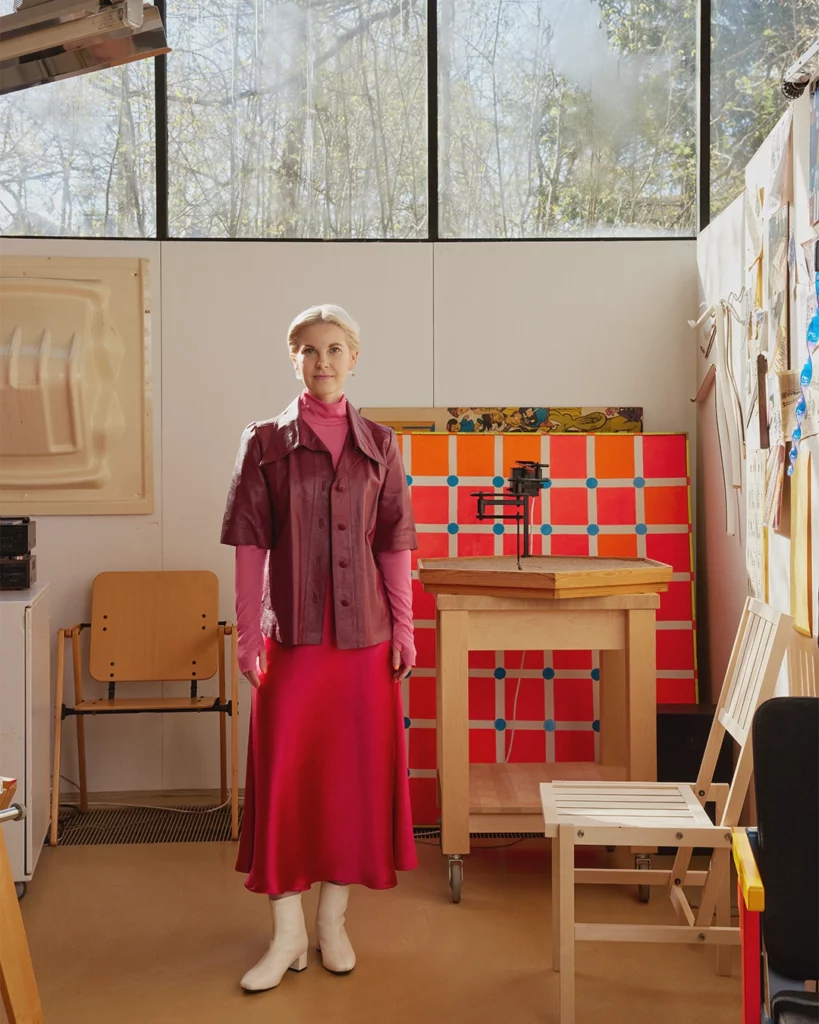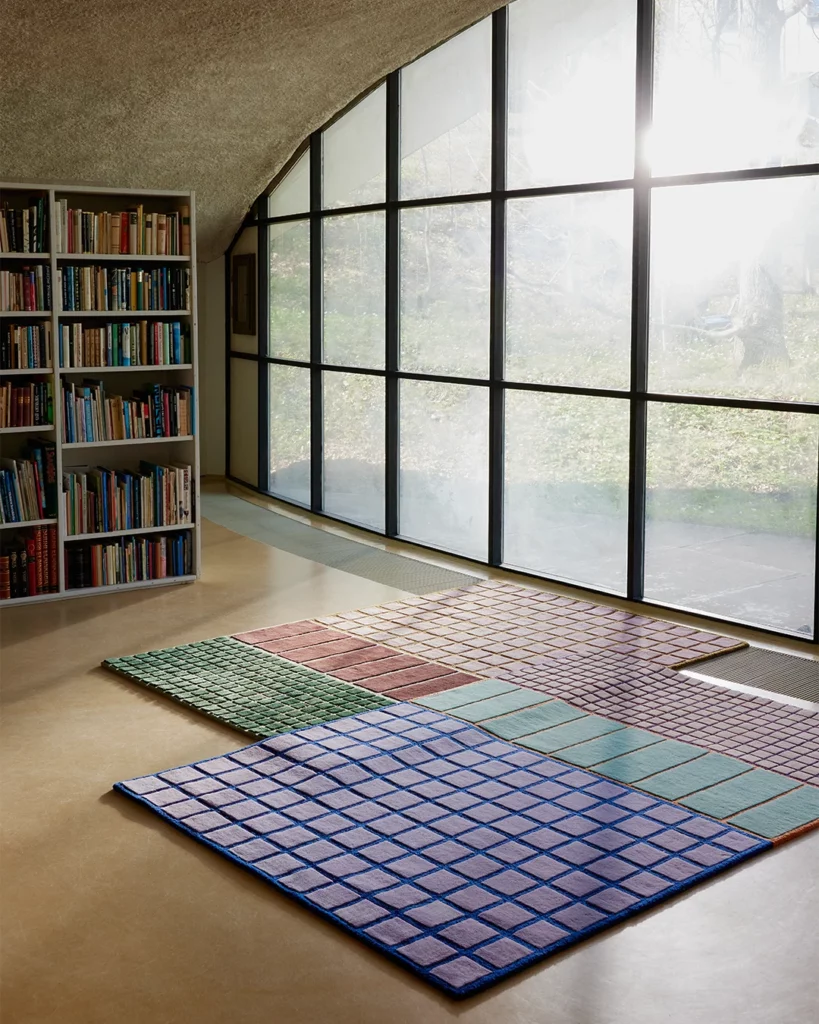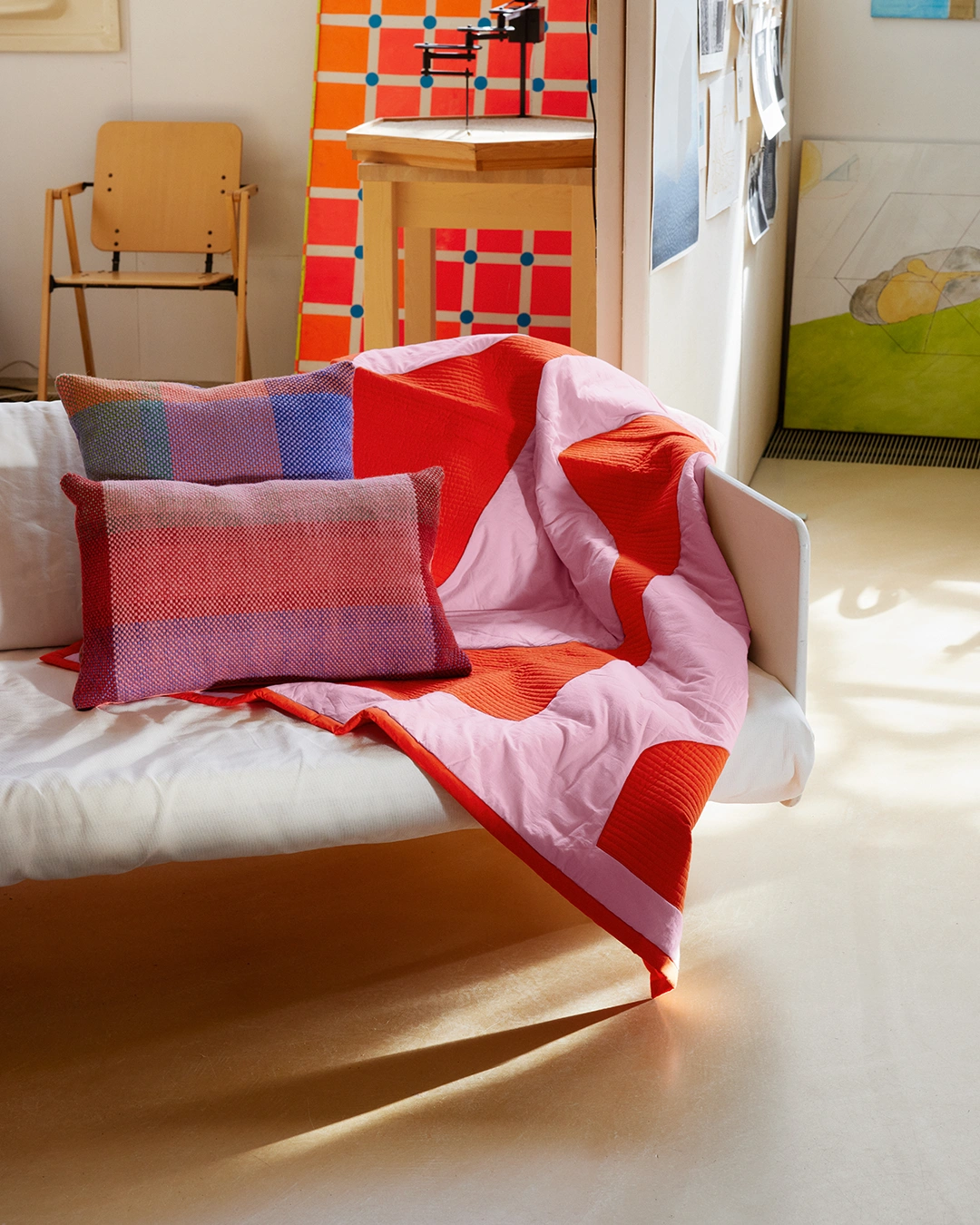



Bold by design
Weaved into the very core of Finarte lies an ever-changing design language. There are no archetypal patterns and only value-driven guidelines — Finarte’s identity comes from people and intuitive creativity. Marianne Huotari, head of design, does however stick to one common thread; include colours to enable self-expression and enhance well-being.
The healing effect of colours has been tried and tested for centuries. Marianne Huotari and the Finarte design team are firm believers; splashes of colour in our everyday lives provide joy and well-being. The idea of healing or colourful design is not new, but Finarte wants to make it available for everyone. The whole creation process balances creative intuition with environmental consideration, and the result is democratic design at the core. Working hands-on, and with a dear friend, makes the process both unique and surprising.
The Finnish heritage is also omnipresent, where long-lived rugs of the ultimate quality are hand-woven with sustainable materials just like Finns have done for centuries. This mindset has been part of Finarte’s design identity since its 1985 launch. At the very core of the company lies the rag rug that co-founder and creative whirlwind Eija Rasinmäki helped to pioneer in her early days as a designer. Eija reinvented the idea of using upcycled and recycled materials to create stripes and multi-coloured patterns that designers wouldn’t utilize with new materials. Birthed in a charming contradiction, the Finarte design DNA lies in the next designs.
What is it like to work with such heritage and re-inventing it everyday?
”Ultimately, we want to celebrate creativity and provide new perspectives, and write our own story going forward. We look through Eija’s archives to find inspiration and invite collaborators and designers to work with us, without restricting their creativity. Together we find the perfect materials and weaving techniques that can make the different designs unique.
”And then we find a way to implement it so that it’s still affordable, sustainable, and in line with our values. That’s how we create our signature pieces.”
Marianne Huotari and Finarte’s paths first crossed in 2018, when the former approached CEO Larissa Immonen at a design event in Helsinki. Huotari’s colourful and bold ceramic wall rugs had previously impressed Immonen, and with a master’s degree in textile design from Aalto University, Huotari proposed a collaboration. To this day, the two have worked closely together to keep the bold and colourful Finarte design language intact and have become great friends.
Since Eija Rasinmäki started making the first couple of Finarte rugs by hand, Finarte’s products have seen more colours and patterns than they can count. One major source of inspiration is the impression-heavy country of India, where Finarte relocated its production to in the early 1990s. If Finland is the heart of Finarte, India is its lungs — circulating out creativity and inspiration with every visit the Finarte team takes.
“When we travelled to India to make the new collection with Larissa (CEO), the plan for the collection was already ready in my mind. However, my experience in India and watching the skilled weavers made the idea of the collection take shape again. The basic building blocks of life and the rhythm of everyday life are the same and shared by all of us. I wanted to bring this idea through the basic elements of the collection — with checks, stripes and curves”, Marianne Huotari tells about the origin of the collection, adding:
“Quite often something like this happens – a groundbreaking moment that allows us to see the world with new eyes and how we can implement that to our collection so that it is shared by everyone.”
How does the bold Finarte design language resonate with Scandinavians that can be seem quite reserved?
”I mean, Finland is the happiest country in the world! But Finns are quite reserved, we’re happy people who don’t show it that strongly. In a sense we’re trying to break that silence: to be loud and visible. I think there are plenty of colours inside us, but you just need to open up and let them free.”


